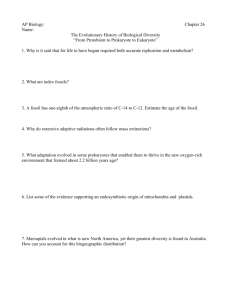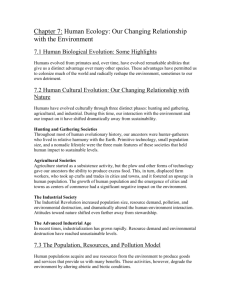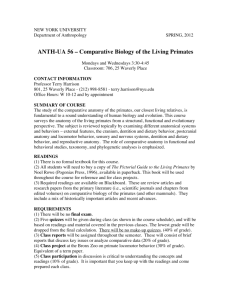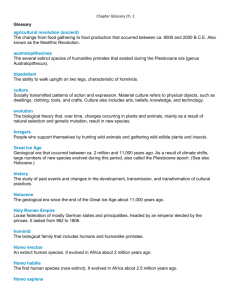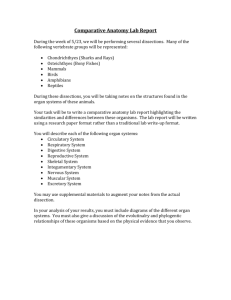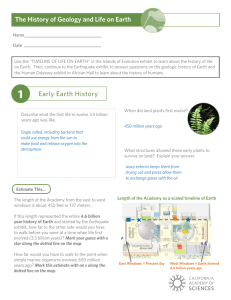Language Evolution - Jason F. Siegel, Ph.D.
advertisement
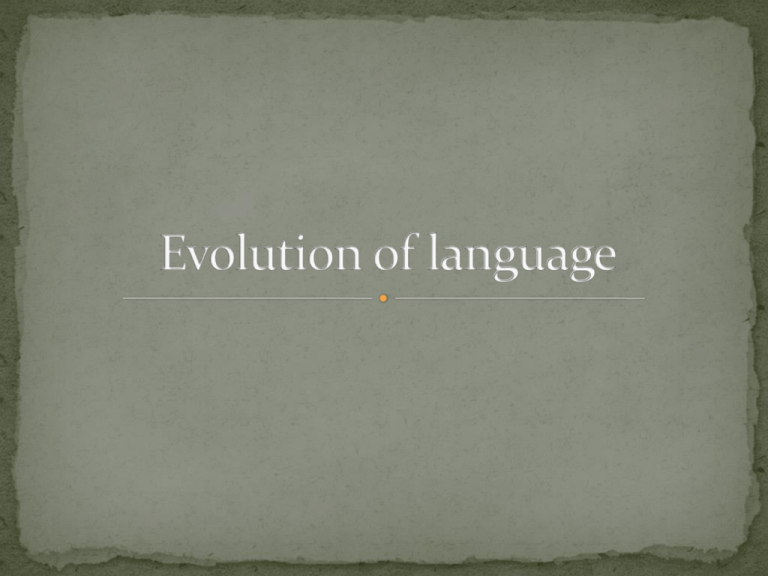
What evolved? How? When? Why? Remember all the characteristics that language has Hierarchy Recursion Variation Universal among humans All these must have evolved in order to get modern language We have also evolved more specialized anatomical features for language Longer vocal tract More sensitive hearing Theory of mind The ability to simulate other people’s thoughts Hierarchical thinking Could have evolved from social hierarchies Monkeys are known to emit certain calls to signal a change or reinforcement of the social hierarchy Symbolic thinking Ability to link a concept to something more concrete like a sound or sequence of sounds, or a picture Adaptation A combination of genetic mutations, natural selection, genetic drift, and gene flow could have produced the mental architecture for language Problems UG is said to NOT be functional so how could it be selected for? UG is too specific for things like genetic mutation Humans were too spread out Language is a moving target Non-adaptation Language just kind of happened, maybe as a by-product of brain size The odds of that happening by chance are incredibly unlikely Languages could have adapted to the limitations of the human brain Doesn’t account for seemingly non-functional restrictions on language, like Principles A and B from semantics Many people seem to think that it did, trying to reconstruct the original mother tongue Merritt Ruhlen has identified several possible Proto-Sapiens roots using the methodology of comparative reconstruction tik – finger akwa – water Abilities to comprehend language are found even in bonobos Kanzi, perhaps the most famous bonobo to be trained, can understand novel sentences produced in Simple English Suggests that some capacity for language evolved much, much earlier than the actual use of languages Scientists generally believe that the must have been a stage of protolanguage that lacked some of the features that characterized The alternate scenario would have language evolving with all its complexity in one generation Anatomy Vocal cords leave no trace, but the vocoid bone occasionally appears Comparative anatomy among primates Location of larynx Comparative brain size/structure Humans have a comparatively large neocortex Not all primates have Broca’s area, Wernicke’s area Brains (and especially the cortex) can be too small to support language Some cranial anatomy can be used There is a hole in the base of the skull through which a nerve to the vocal cords go The size of that hole is sometimes used as evidence that vocalizations were more important Anthropological evidence Hand-tools Fashioning handaxes requires a good deal of planning, dexterity, and spatial reasoning Throwing spears requires coordination May be evidence for a gestural origin of language Artwork Shows symbolic thinking Much artwork doesn’t appear until 30,000 BCE, way after language is thought to have appeared Comparative social behavior and mental capacity among primates Group size and sociality Reasons for vocalizations Ability to manage hierarchical thought patterns Estimates vary widely Some place it at 30,000 years ago, with the advent of visible culture Some place it very far back with the earliest hominids 1,000,000 years ago Generally this is said to be protolanguage rather than full-fledged language A safe estimate is between 100,000 and 250,000 years ago Thought Some, including Chomsky, have suggested that language could have evolved for thought Ignores social character of language Hard to see how language structure could have been shared mentally Produce social bonding Dunbar proposes that conversation takes the place of grooming Grooming is an intensely social activity Neocortex size is roughly correlated with social group size Humans have a group size of about 150 people Brain size increased as body hair decreased, leaving less need for physical grooming Language variation has been exapted to serve as a group marker
